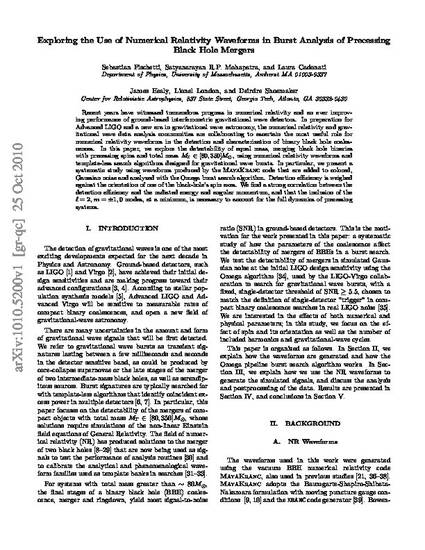
Unpublished Paper
Exploring the Use of Numerical Relativity Waveforms in Burst Analysis of Precessing Black Hole Mergers
(2010)
Abstract
Recent years have witnessed tremendous progress in numerical relativity and an ever improving performance of ground-based interferometric gravitational wave detectors. In preparation for Advanced LIGO and a new era in gravitational wave astronomy, the numerical relativity and gravitational wave data analysis communities are collaborating to ascertain the most useful role for numerical relativity waveforms in the detection and characterization of binary black hole coalescences. In this paper, we explore the detectability of equal mass, merging black hole binaries with precessing spins and total mass M_T in [80,350]Msol, using numerical relativity waveforms and template-less search algorithms designed for gravitational wave bursts. In particular, we present a systematic study using waveforms produced by the MAYAKRANC code that are added to colored, Gaussian noise and analyzed with the Omega burst search algorithm. Detection efficiency is weighed against the orientation of one of the black-hole's spin axes. We find a strong correlation between the detection efficiency and the radiated energy and angular momentum, and that the inclusion of the l=2, m=+/-1,0 modes, at a minimum, is necessary to account for the full dynamics of precessing systems.
Disciplines
Publication Date
October 25, 2010
Comments
This is the pre-published version harvested from ArXiv.
Citation Information
Sebastian Fischetti, James Healy, Laura Cadonati, Lionel London, et al.. "Exploring the Use of Numerical Relativity Waveforms in Burst Analysis of Precessing Black Hole Mergers" (2010) Available at: http://works.bepress.com/laura_cadonati/2/
